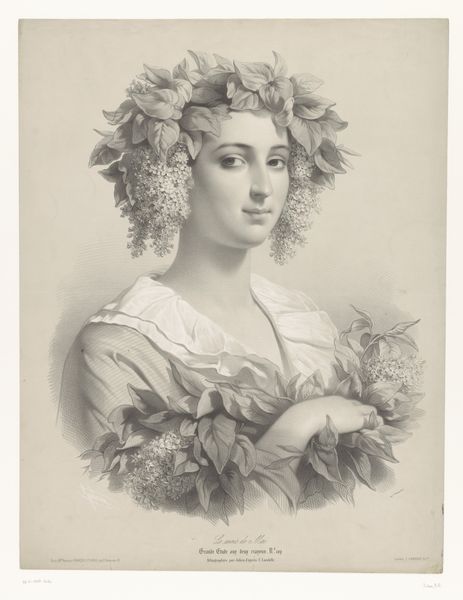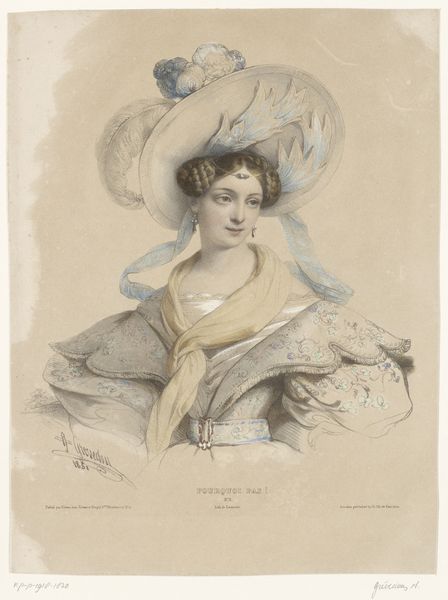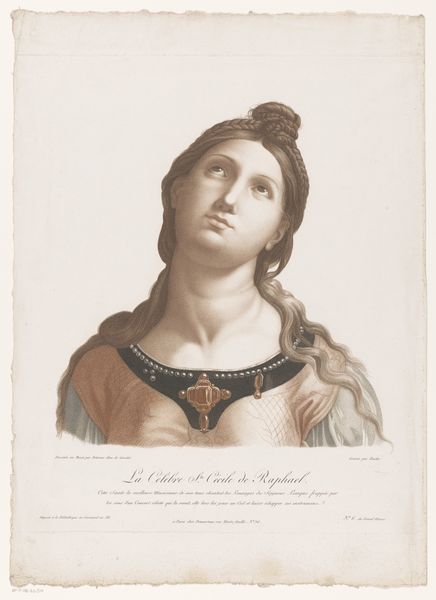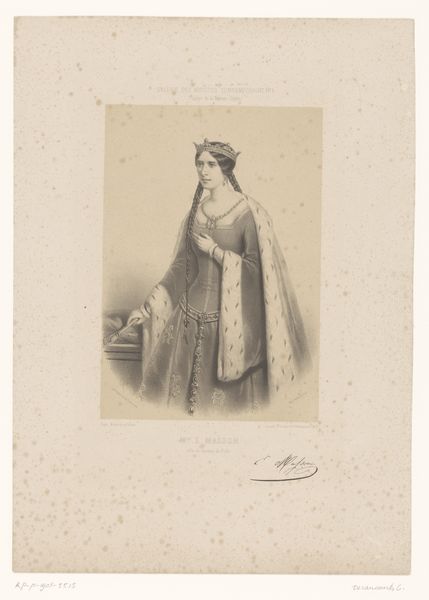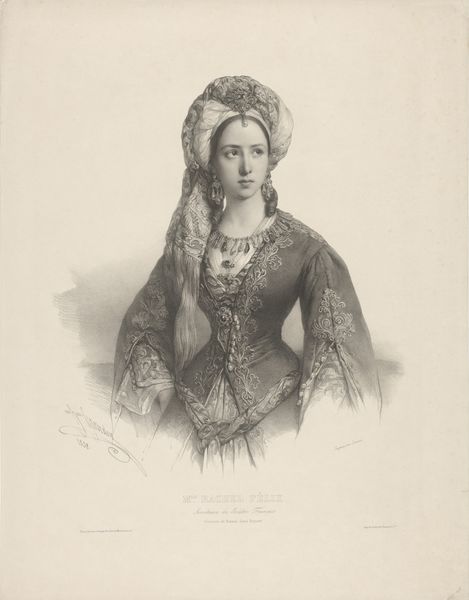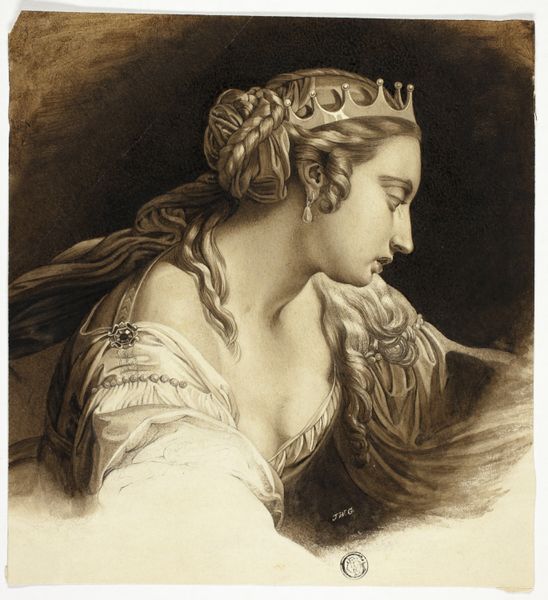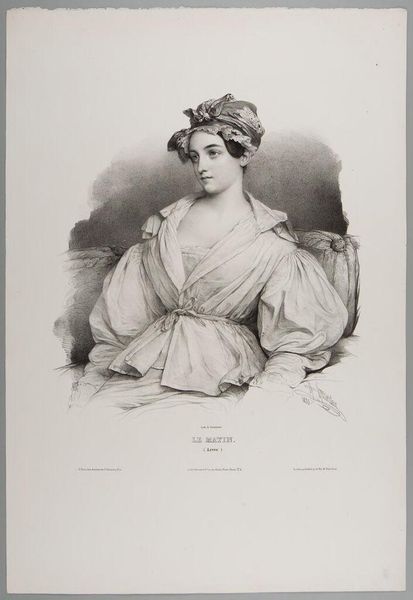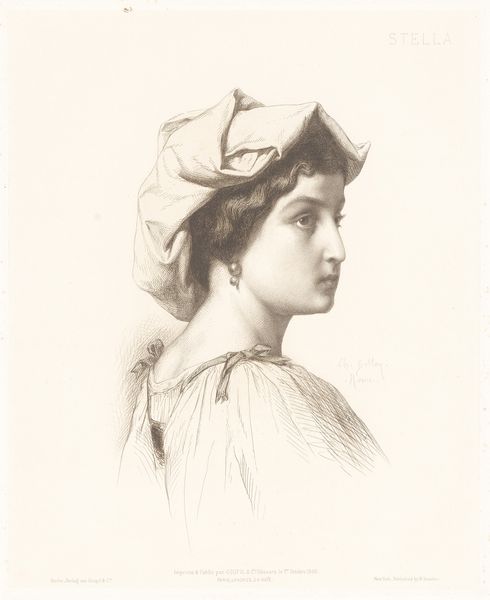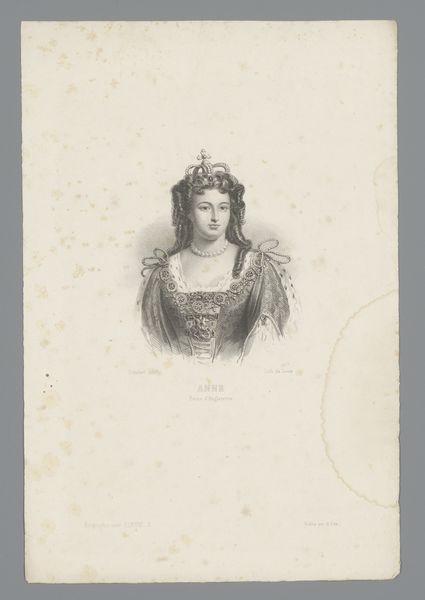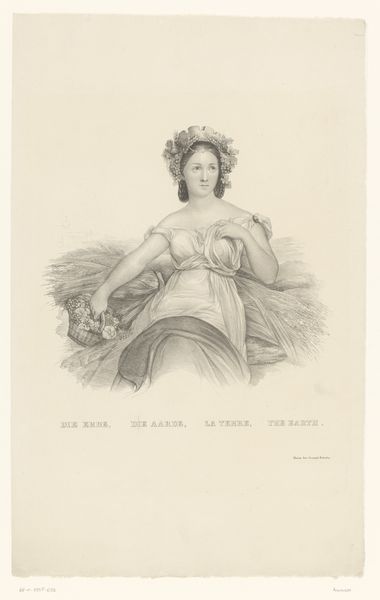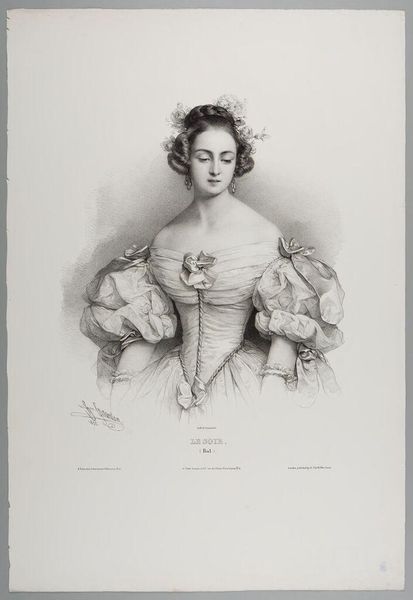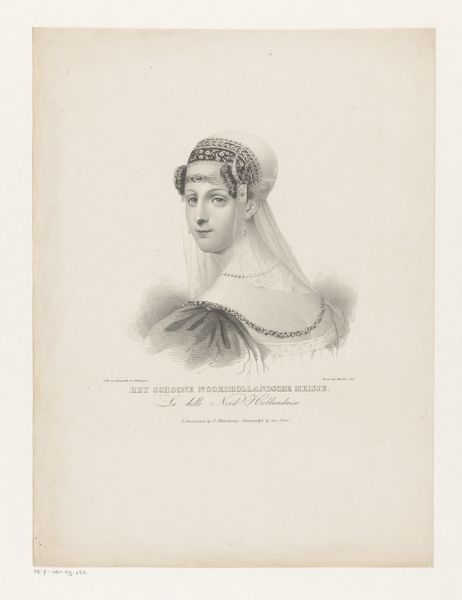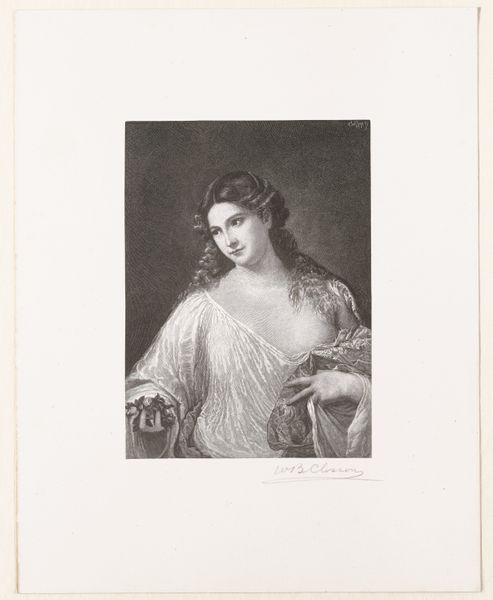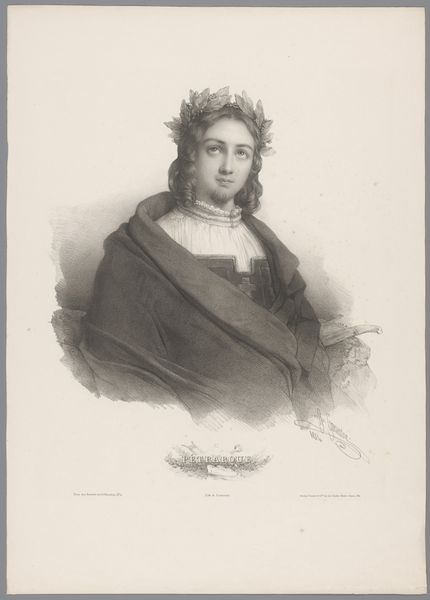
drawing, pencil
#
portrait
#
drawing
#
neoclacissism
#
allegory
#
pencil sketch
#
caricature
#
portrait reference
#
pencil drawing
#
pencil
#
portrait drawing
#
academic-art
#
portrait art
Dimensions: height 590 mm, width 498 mm
Copyright: Rijks Museum: Open Domain
Curator: This lithograph by Bernard Romain Julien, created in 1853 and titled "Personification of Summer," invites us to consider how seasonal allegories function within 19th-century academic art. It’s currently held at the Rijksmuseum. Editor: Well, my first impression is how incredibly still and serene she appears. Almost like a marble statue come to life in graphite. There's a cool, almost detached quality to her gaze, despite the abundance of fruit she’s carrying. Curator: Indeed. The stillness resonates with Neoclassical ideals, evoking a sense of timelessness and ideal beauty. But that "cool" detachment, as you call it, might also reflect the limited roles afforded to women, especially within allegorical representation. She’s a symbol, a vessel of summer’s bounty, but what agency does she truly possess? Editor: That's a valid point, framing her within that historical context of limited agency shifts the image for me. The abundance of fruit… It’s almost overwhelming, isn't it? It could represent a creative outpouring, maybe even female fertility... but if it's all pre-determined, does that reduce its impact somehow? It’s a basket full of expectations! Curator: Precisely! The composition and the symbolism intersect with socio-political undercurrents. Notice the precision of the linework, the idealized features...all these elements are carefully orchestrated to project a specific vision, one rooted in privilege and societal expectations. Consider how this contrasts with representations of women from marginalized communities during the same period. Editor: You know, looking again, I see it. There’s a definite tension between the almost photographic rendering and the allegorical intent. It’s beautiful, technically stunning, but it’s also…constraining. The artistry’s undeniable, but knowing how these symbols played into broader power dynamics, well, it certainly colours the experience. It’s as though the season itself has been forced into an uncomfortable formal gown. Curator: And understanding those tensions allows us to critically examine the artwork's enduring relevance and impact. It becomes more than just a pretty picture; it becomes a point of departure for conversations about gender, representation, and the complexities of history. Editor: Absolutely. I initially responded to the surface calm, the beauty, the craftsmanship… but digging deeper with your perspective, I start wrestling with the forces that shaped this image and its ongoing message. It transforms from a peaceful portrait into something decidedly more restless.
Comments
No comments
Be the first to comment and join the conversation on the ultimate creative platform.
